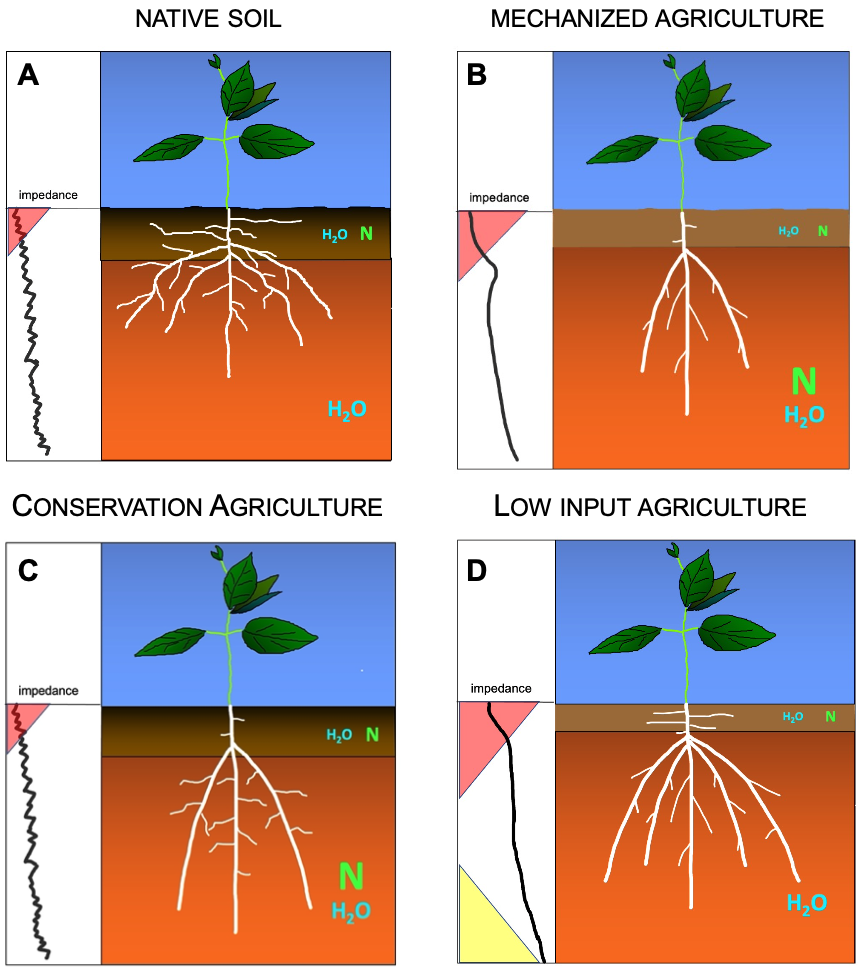
Conceptual diagram of 4 dominant soil environments for crop cultivation and root ideotypes for them.
Authors
Lynch JP, SJ Mooney, CF Strock, HM Schneider
Source
Plant, Cell & Environment 45:620–636
Download Options
https://doi.org/10.1111/pce.14213
Abstract
Abstract: Mechanical impedance constrains root growth in most soils. Crop cultivation changed the impedance characteristics of native soils, through topsoil erosion, loss of organic matter, disruption of soil structure, and loss of biopores. Increasing adoption of Conservation Agriculture in high-input agroecosystems is returning cultivated soils to the soil impedance characteristics of native soils, but in the low-input agroecosystems characteristic of developing nations, ongoing soil degradation is generating more challenging environments for root growth. We propose that root phenotypes have evolved to adapt to the altered impedance characteristics of cultivated soil during crop domestication. The diverging trajectories of soils under Conservation Agriculture and low-input agroecosystems has implications for strategies to develop crops to meet global needs under climate change. We present several root ideotypes as breeding targets under the impedance regimes of both high-input and low-input agroecosystems, as well as a set of root phenotypes that should be useful in both scenarios. We argue that a ‘whole plant in whole soil’ perspective will be useful in guiding the development of future crops for future soils.

